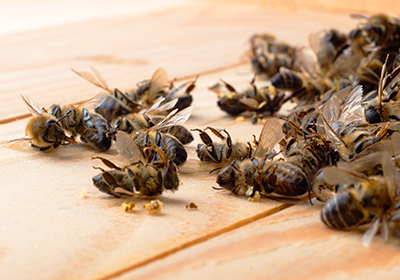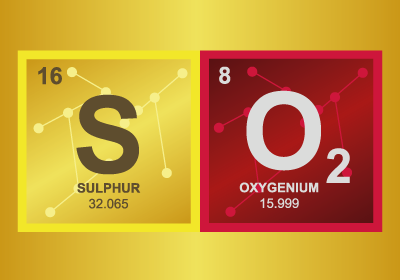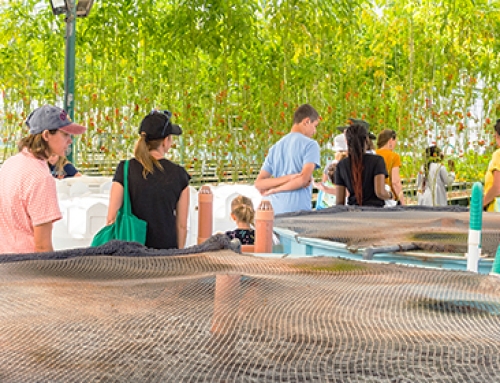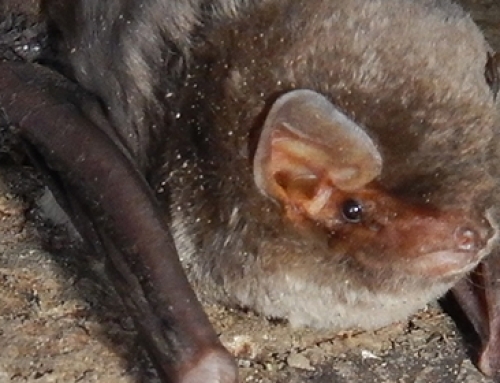Attention to animal welfare has grown considerably in recent years, appropriately accompanied by regulatory recognition and support for livestock, pets, and animals used for scientific purposes. However, in the case of research animals, cephalopods are the only invertebrates covered by EU Directive 63/2010, transposed in Italy by legislative decree no. 26/2014. Therefore, bee welfare is not currently regulated despite the need for precise recommendations in some situations, as in the case of colony euthanasia.
The National Reference Centre (NRC) for Beekeeping of the Istituto Zooprofilattico Sperimentale delle Venezie (IZSVe) has closely explored the subject of honey bee euthanasia, in cases when it becomes the necessary option. Based on the scientific literature, CRN researchers have identified the techniques most widely used for the purpose in relation to efficacy and minimization of honey bee suffering. The study has been published in the Journal of Apicultural Research.
Euthanasia in beekeeping

The National Reference Centre (NRC) for Beekeeping of the Istituto Zooprofilattico Sperimentale delle Venezie (IZSVe) has closely explored the subject of honey bee euthanasia, in cases when it becomes the necessary option. Based on the scientific literature, NRC researchers have identified the techniques most widely used for the purpose in relation to efficacy and minimization of honey bee suffering.
Resorting to euthanasia can sometimes be necessary in apiculture. Such practice is authorized and provided for by current legislation when problems arise for honey bees, the environment and/or public health that cannot be solved otherwise. Honey bee destruction normally takes place after dusk, when most bees have returned to the hive. The hive is then sealed, confining all the bees and preventing their subsequent escape.
In the case of some infectious or parasitic honey bee diseases, as American foulbrood, or infestation by exotic parasites (e.g., Aethina tumida), veterinary legislation and national emergency plans provide for the immediate destruction of honey bees, when the number of agents responsible for the infection/infestation is still limited and localized. In such cases, euthanasia is a rapid and effective response to protect the health of honey bee stock at the local or national level.
Euthanasia is needed sometimes to prevent the introduction and spread of bees of unknown origin, or to control abandoned hives, or swarms located in places that are difficult to access and manage, and could pose a threat to human public health.
Techniques and substances used to destroy honey bees
Over the years, beekeepers have passed down recommendations on chemical or physical methods for euthanizing honey bees, based on direct experience in the field. However, these techniques have neither been adequately studied in controlled conditions nor are officially recognized. In the event of an infectious disease outbreak or infestation, the beekeeper simply selects the easiest, most immediately effective method that can be performed in loco from those available at the time.
General criteria
Above all, bee handling and the euthanizing method used must be rapid in order to limit suffering. Accordingly, the procedure must meet animal welfare protection requirements at the time of destruction. Honey bee distress must be minimized during handling, too. The following factors need to be taken into consideration:
- the species and number of bees in the hive,
- the means available for containing the bees,
- the skill of the staff involved,
- the environmental conditions,
- compliance with regulations on the procurement and storage of the substances used for euthanasia,
- the safety of the beekeepers and workers involved,
- the subsequent disposal of the bees.
Main substances and their authorization

The study indicates the main substances used to euthanize honey bees throughout the world. Sulphur dioxide is the most widely used substance in Italy because it is inexpensive and easy to apply. A sulphur tablet is placed at the bottom of the hive and ignited. The sulphur dioxide produced by combustion swiftly saturates the hive air, rapidly killing the bees. When intervening in several hives, the sulphur dioxide is instead applied by expert, authorized staff using a cylinder.
The study indicates the main substances used to euthanize honey bees throughout the world. The list includes:
- sulphur dioxide,
- petrol or diesel,
- isopropyl alcohol,
- dry ice,
- soapy water,
- synthetic pyrethroids.
These are the most appropriate substances because they also take account of user’s safety and environmental impact. In the past, ethyl acetate, calcium cyanide and sodium cyanide were adopted but later abandoned due to toxicity.
Sulphur dioxide is the most widely used substance in Italy because it is inexpensive and easy to apply. A sulphur tablet is placed at the bottom of the hive and ignited. The sulphur dioxide produced by combustion swiftly saturates the hive air, rapidly killing the bees. When intervening in several hives, the sulphur dioxide is instead applied by expert, authorized staff using a cylinder. This technique is only used under field conditions, in the open air, to avoid the risk of staff exposure.
Despite being adopted for many years in apiculture, the use of active ingredients to destroy bees is not regulated in either Italy or the European Union, as different from other countries, including the United Kingdom, United States, Canada, and Australia. To date none of the above-mentioned substances are among those currently authorized by EU Regulation no. 528/2012 governing the use of biocidal products to protect humans and animals from harmful organisms.
Authorized staff
According to the situation at hand, euthanasia can be performed by beekeepers or specialized disinfestation companies. Both cases envisage supervision by the pertinent local veterinary authorities.
Consolidating research and legislation
The IZSVe study concluded that while euthanasia is a necessary and, in many cases, mandatory practice, little has been done to date to tailor euthanizing techniques to bees’ distinctive characteristics. Greater, more specific knowledge is thus warranted on the welfare of honey bees and insects in general. Such information can be derived from research and laboratory work, as conducted in the vertebrate world. Finally, the competent authorities should reconsider the need to authorize currently used substances and beekeepers must become more aware of and pay greater heed to correct methods of use.
Read the scientific paper in the Journal of Apicultural Research »






